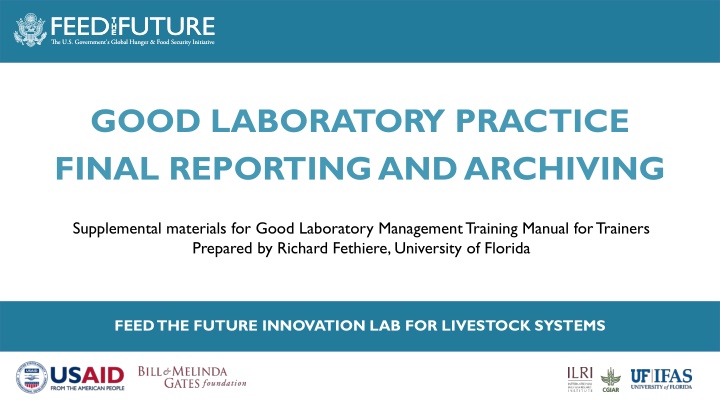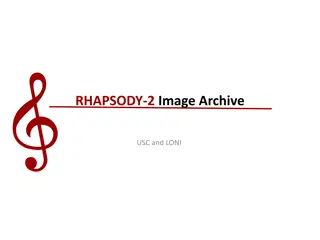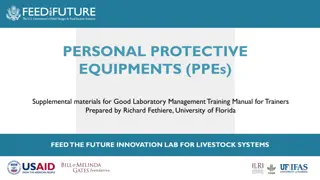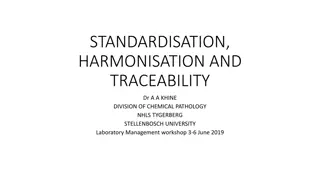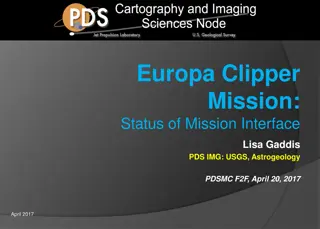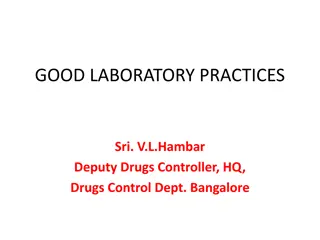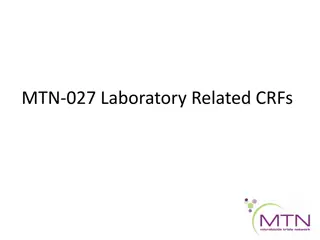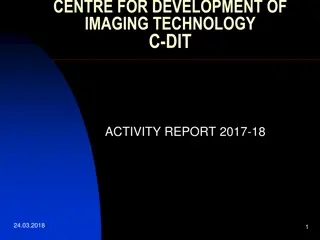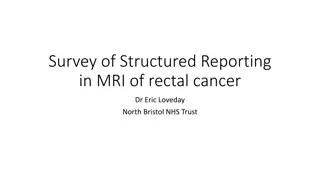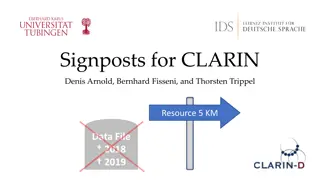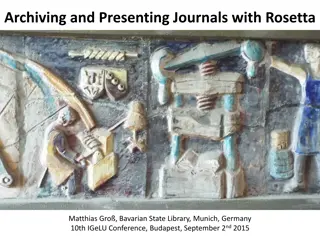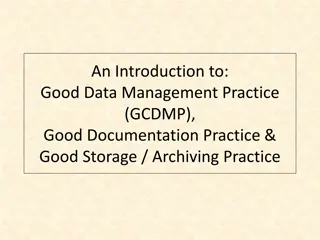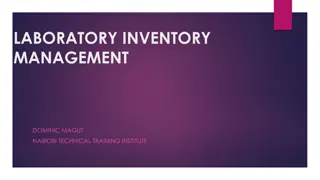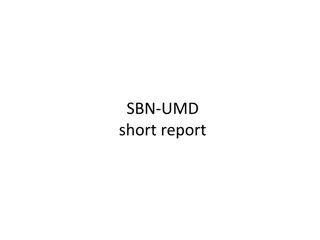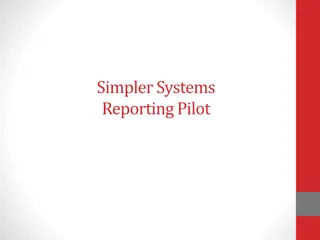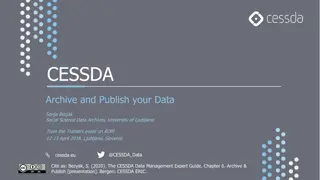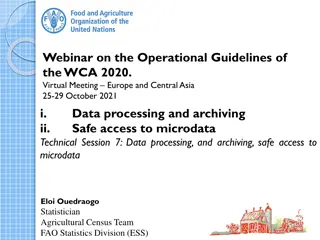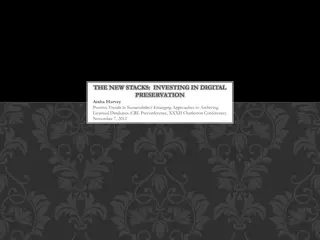Best Practices for Final Reporting and Archiving in Good Laboratory Management
Detailed guidelines on preparing final reports, reporting study results, and archiving important items in a laboratory setting to ensure data validity, traceability, and long-term storage under secure conditions.
Download Presentation

Please find below an Image/Link to download the presentation.
The content on the website is provided AS IS for your information and personal use only. It may not be sold, licensed, or shared on other websites without obtaining consent from the author.If you encounter any issues during the download, it is possible that the publisher has removed the file from their server.
You are allowed to download the files provided on this website for personal or commercial use, subject to the condition that they are used lawfully. All files are the property of their respective owners.
The content on the website is provided AS IS for your information and personal use only. It may not be sold, licensed, or shared on other websites without obtaining consent from the author.
E N D
Presentation Transcript
GOOD LABORATORY PRACTICE FINAL REPORTING AND ARCHIVING Supplemental materials for Good Laboratory Management Training Manual for Trainers Prepared by Richard Fethiere, University of Florida FEED THE FUTURE INNOVATION LAB FOR LIVESTOCK SYSTEMS Photo Credit Goes Here
Final report Background Archives Quality Assurance Unit
READING: SECTION 9.2 OF OECD GOOD LAB PRACTICES
WHAT SHOULD BE INCLUDED IN THE FINAL REPORT? Identification of the study, the test item, and reference item Informationconcerning the sponsor and the test facility Dates: experiment starting and completion dates Statement Description of materials and test methods Results Storage
THE FINAL REPORT Once a final report has been signed by the study director, it cannot be changed. If there is a need to correct or amplify the report, this must be done by issuing a separate amendment to the report. The amendment must indicate what is being changed, or what is being added to the report. The amendment must be signed by the study director and must be audited by the Quality Assurance Unit (QAT)
REPORTING OF STUDY RESULTS A final report should be prepared for each study Reports of principal investigators or scientists involved in the study should be signed and dated by them. The final report should be signed and dated by the study director Corrections and additions to a final report should be in the form of amendments. Read section 9.1 of the OECD GLP Principles
ARCHIVES The function of the archiving is to store important items over a long period under secure conditions
ARCHIVES All that is left at the end of the study is needed to demonstrate the validity and traceability of the scientific results. Therefore, the archives are so important
ARCHIVES: FUNCTION Long-term secure storage and fast data retrieval To consider Contains all original scientific data, master documents, reports, etc. It is important to guarantee that all the data are transferred and that there is a record of what is transferred Endpoint of regulated work
ARCHIVES: SUBMISSION FORM Submission number Department/group Project Study number Date/Signature of submitter/Signature of archivist Quantity Description Comments
ARCHIVES: HISTORY The archived materials must be protected from interference (particularly unauthorized removal that will lead to loss) and from disasters like fire and flooding and deliberate vandalism. Therefore, entry to the archives should be restricted You need an SOP to describe the conditions of entry (sign in and out) and a list of persons who are allowed access
ARCHIVES Under conditions that minimize deterioration Fire/Flood precautions Air-conditioned environment Computer backups maintained in safe cabinets
QUALITY ASSURANCE UNIT The Quality Assurance Unit (QAU) is the subject of an important chapter of GLP regulations, and the OECD has published a consensus document to help the interpretation of the QAU section in the main text
QUALITY ASSURANCE UNIT o To understand the work of the QAU it should be remembered that GLP is a standard for the organization of studies o GLP is concerned with the organization of studies and the way in which they are: Planned o GLP is not a set of rules that judges the scientific value of studies Performed Recorded o The QAU works in the area of compliance with GLP and in the area of study organization Reported Monitored
READING: SECTION 2 ON QUALIFICATION OF QUALITY ASSURANCE PERSONNEL
QUALITY ASSURANCE: RESPONSIBILITIES (FROM GLP) Ensure study plan and SOP are available The GLP regulations require that the QAU has a documented program. This means that the QAU must have its own SOP on how it operates and must record what it does Ensure study plan and SOP are followed By inspector By audit
READING: SECTION 2 OF OECD GOOD LAB PRINCIPLES
QUALITY ASSURANCE: RESPONSIBILITIES Report findings in writing The GLP Principles require QAU to check that all personnel have protocols and SOP available for their work and that these documents are followed during the performance of their work Review final reports Prepare / Sign Quality Assurance statement
QUALITY ASSURANCE: RESPONSIBILITIES When the QAU performs an audit/inspection it must be recorded Report findings in writing in writing. Any findings resulting from Review final reports the investigation must be reported to the appropriate person in Prepare / Sign QA statement management and the study director if the finding is about a specific study
QUALITY ASSURANCE: RESPONSIBILITIES Although the OECD GLP Principles clearly state that the QAU must verify (review) the protocol, the same is not clearly stated for SOP. However, the OECD Consensus document on QAU responsibilities recommends this: o Review study plan o Review SOP
QUALITY ASSURANCE: INSPECTION / AUDIT 3 Types Example: Study-based inspections Study-based Those that investigate specific studies They are performed on the protocol, the phases of the study that are in process or on going, and on the final report Typically, the QAU identifies important study phases known as critical phases, which are then inspected during the actual performance of operations by study staff Facility/system-based Process-based
QUALITY ASSURANCE: UNIT/AUDITS o QA Unit is a team responsible as defined by the GLP to ensure that the laboratory is in compliance with GLP rules o This team is organized to work independently from the personnel in charge of study operations and functions as witnesses to the pre-clinical research process
QUALITY ASSURANCE STATEMENT Dates of inspection Dates of findings to study director and management Phases audited Confirmation that reports reflects methods used and data generated Any exceptions Sign only if study is GLP compliant with study statement Director is considered justifiable, and all corrective actions completed
Read the definition of facility inspections in the OECD consensus document Quality Assurance and GLP: Section on QA inspections
Consult the Good Laboratory Management Training Manual for Trainers https://livestocklab.ifas.ufl.edu/resources/glp/ Direct link to manual in PDF: https://livestocklab.ifas.ufl.edu/media/livestocklabifasufledu/pdf- /MANUAL-Fethiere_UF_Good-lab-management-practices_2022.pdf
Feed the Future Innovation Lab for Livestock Systems https://livestocklab.ifas.ufl.edu/ (Subscribe to newsletter) livestock-lab@ufl.edu Disclaimer This work was funded by the United States Agency for International Development (USAID) Bureau for Food Security under Agreement #AID-OAA-L-15-00003 as part of Feed the Future Innovation Lab for Livestock Systems, and by the Bill & Melinda Gates Foundation OPP#1175487. Any opinions, findings, conclusions, or recommendations expressed here are those of the authors alone.
